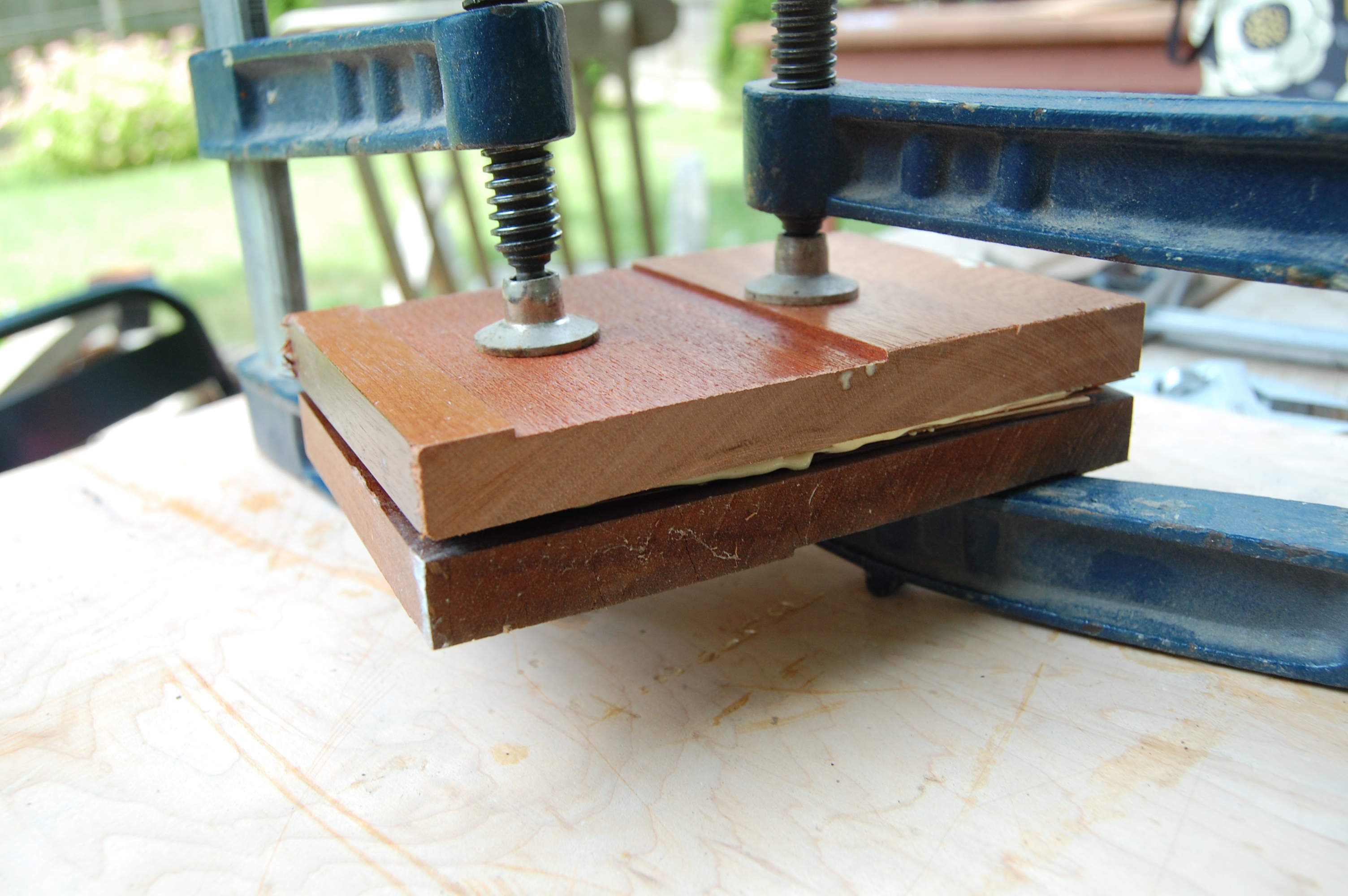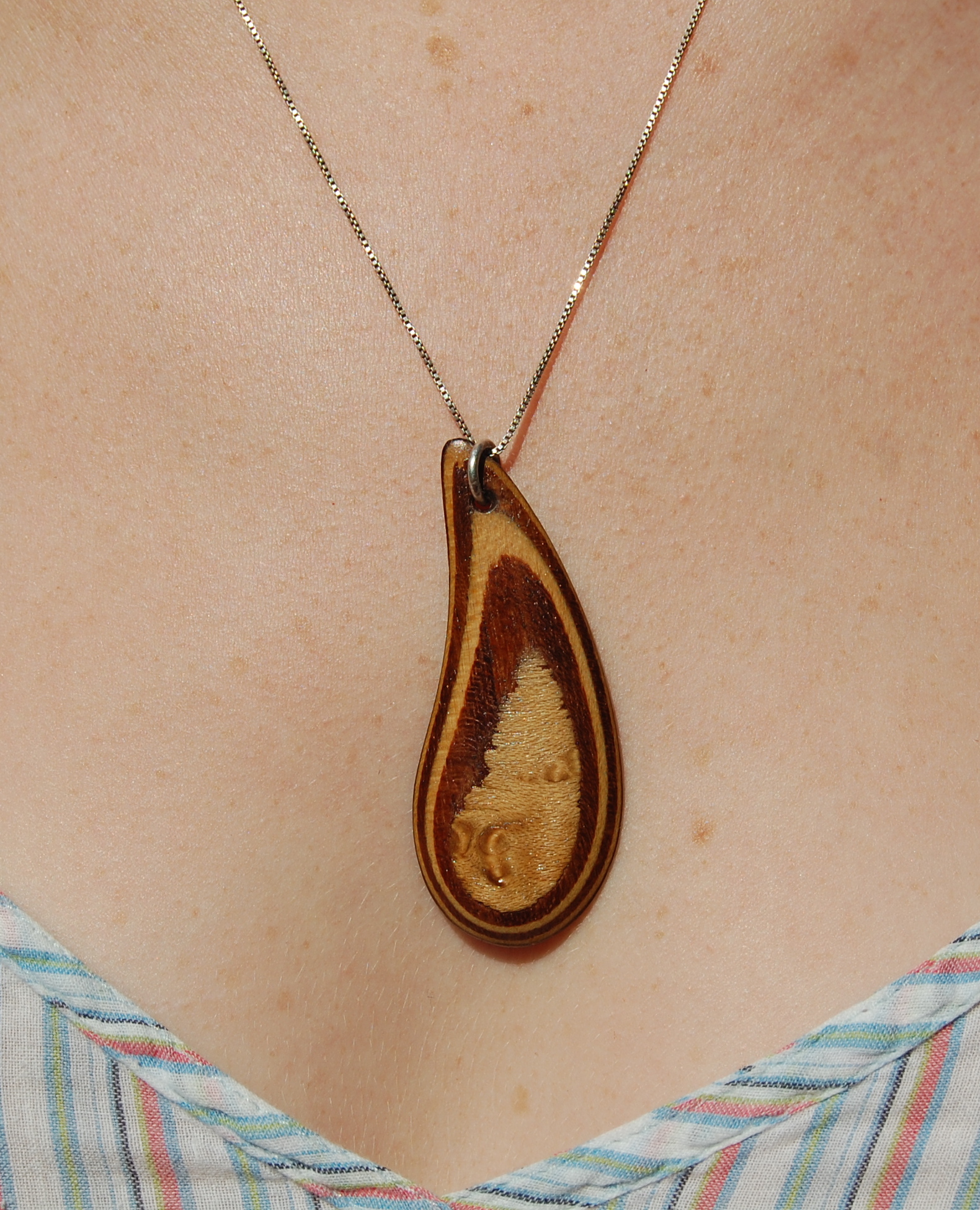Veneer Pendant

This is part of a series of pendants I have been working on for a little while now. Its stack laminated veneer that you sand through to show the different layers.
Tools and Materials





For this one not a ton of tools or materials needed and a lot of the stuff can pretty easily be replaced by something else you have handy
Materials-
Tools
Materials-
- Veneer- I tend to have a bunch hanging around the house and the shop, but some good contrasting colors really work well in this project. If you don't have any lying around rockler has a nice bundle of assorted veneers here if you are looking for something specific Berkshire Veneer has a great selection, but you have to order a larger amount
- Glue- I like Titebond II or Titebond III, but any carpenters/ alaphatic resin glue will work.
- Sandpaper- 150 grit, 220, and then 400 sanding sponge
- finish- I used a vinyl sanding sealer (Lacquer Base) and a Pre-Catalyzed Lacquer for a topcoat
Tools
- Clamps
- a couple of flat blocks or clamping pads to sandwich the veneer between
- handscrew/vise
- coping saw/scroll saw
- rasps and files of varying aggression
- drill
- razor blade/veneer saw/ very sharp saw
Prep and Glue Up











.JPG)

To start you need to pick out at least 7 pieces of veneer to glue up, you need at least 6 glue joints for the wood to be stable and not warp in the future. I usually like to alternate between dark and light colors, to give the best contrast later on.
Once you pick the veneer you are planning to use, start by cutting it all down to a fairly standard dimension so all the pieces are close to uniform. On more fragile veneers i would suggest lining the back with tape before making any cuts.
If you have a veneer saw you can use this to cut it down, but a sharp razor or utility knife would work just as well for these rough cuts.
once you have everything cut down to close to the same size, layout the veneer alternating the dark and light side by side
Now that you have the pieces laid out it is time to start gluing things up.
Take your glue bottle and start putting the glue on one side of each of the pieces of veneer with the exception of whatever one you are going to use for the back of the necklace. Use a foam brush or folded piece of paper towel to spread the glue in a thin even layer.
Take the first piece of veneer and stack it glue side down on the one piece that you did not spread glue on, repeat the process for the remaining pieces.
Once you have the stack all glued up, place it between the two clamping blocks, and clamp it down good and tight. Now you get to wait for 8 hours or overnight until the glue is dry.
Once you pick the veneer you are planning to use, start by cutting it all down to a fairly standard dimension so all the pieces are close to uniform. On more fragile veneers i would suggest lining the back with tape before making any cuts.
If you have a veneer saw you can use this to cut it down, but a sharp razor or utility knife would work just as well for these rough cuts.
once you have everything cut down to close to the same size, layout the veneer alternating the dark and light side by side
Now that you have the pieces laid out it is time to start gluing things up.
Take your glue bottle and start putting the glue on one side of each of the pieces of veneer with the exception of whatever one you are going to use for the back of the necklace. Use a foam brush or folded piece of paper towel to spread the glue in a thin even layer.
Take the first piece of veneer and stack it glue side down on the one piece that you did not spread glue on, repeat the process for the remaining pieces.
Once you have the stack all glued up, place it between the two clamping blocks, and clamp it down good and tight. Now you get to wait for 8 hours or overnight until the glue is dry.
Forming Your Blank






Now that the glue is dry, you can unclamp the piece and voila, you have just made plywood, granted some pretty fancy plywood...
Start laying out the shape of the pendant you want to cut on the front of the veneer, i just used a pencil until i had a shape i liked
when you have a shape you like laid out, you can either clamp it up in a vise or use a handscrew and clamp it to a benchtop/desktop/tabletop
Take your coping saw and start to cut out the shape it's ok to rough cut it so don't be super concerned about following the lines perfectly, you are going to be sanding and shaping it further as things go along.
Start laying out the shape of the pendant you want to cut on the front of the veneer, i just used a pencil until i had a shape i liked
when you have a shape you like laid out, you can either clamp it up in a vise or use a handscrew and clamp it to a benchtop/desktop/tabletop
Take your coping saw and start to cut out the shape it's ok to rough cut it so don't be super concerned about following the lines perfectly, you are going to be sanding and shaping it further as things go along.
Sanding and Final Shaping








Now that you have the rough blank cut out, its time to make it look a little bit better and get it into its final shape
Clamp the blank back up in the vise or handscrew and start by using a rasp or file, i like using a four in hand, gives you a lot of options in one tool, its been a go too for my toolbox for years now.
Work the edges and the top of the piece until you have smoothed profile on the piece and shaped the top to your liking...
once you have it roughed out with the file, grab the 220 grit paper and get things to more of a finished shape and then hit it with the 400 and you will be ready for finish!
Clamp the blank back up in the vise or handscrew and start by using a rasp or file, i like using a four in hand, gives you a lot of options in one tool, its been a go too for my toolbox for years now.
Work the edges and the top of the piece until you have smoothed profile on the piece and shaped the top to your liking...
once you have it roughed out with the file, grab the 220 grit paper and get things to more of a finished shape and then hit it with the 400 and you will be ready for finish!
Finishing the Piece






Okay, so the piece is sanded and prepped for finish. I like to use a sanding sealer and pre-catalyzed lacquer but you could easily go with an oil or salad bowl style finish
I start by spraying the back with a few coats of the sealer, sanding with 400 grit between coats. Once you have 2 coats on the back of the piece and they have dried do the same to the front.
Let those dry a half an hour or so and then start coating it with the pre-cat, do three or four coats with that scuffing between all the coats. After about the third coat it will really develop a great luster and once it does you can call it quits at any time.
I start by spraying the back with a few coats of the sealer, sanding with 400 grit between coats. Once you have 2 coats on the back of the piece and they have dried do the same to the front.
Let those dry a half an hour or so and then start coating it with the pre-cat, do three or four coats with that scuffing between all the coats. After about the third coat it will really develop a great luster and once it does you can call it quits at any time.
The Finished Piece
.JPG)

And thats it, your piece is done. Drill a hole through it and put it on a necklace, stick a pin on it and make it a broach, attach it to a bracelet or just let it sit on your table and admire its beauty!
I chose to drill a hole through it make a little jump ring and hang it on a silver necklace and give it to my girlfriend.
hope you enjoyed the instructable and feel free to let me know how your pieces came out, would love to see some other pieces done like this ( I have a bentwood laminated bracelet done in this way that i have had sitting unfinished in my garage for years...)
I chose to drill a hole through it make a little jump ring and hang it on a silver necklace and give it to my girlfriend.
hope you enjoyed the instructable and feel free to let me know how your pieces came out, would love to see some other pieces done like this ( I have a bentwood laminated bracelet done in this way that i have had sitting unfinished in my garage for years...)